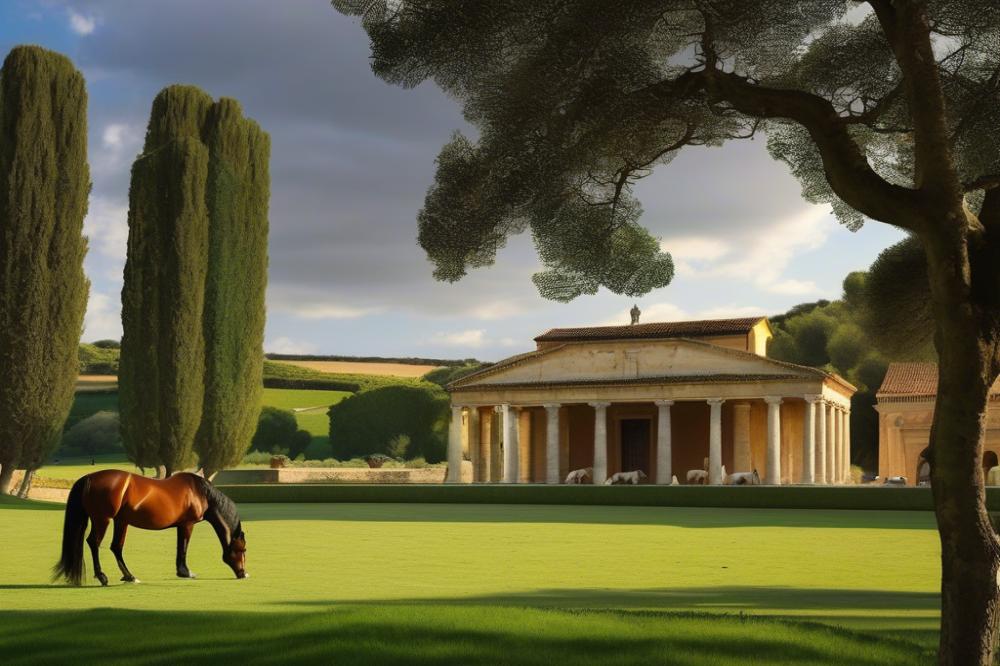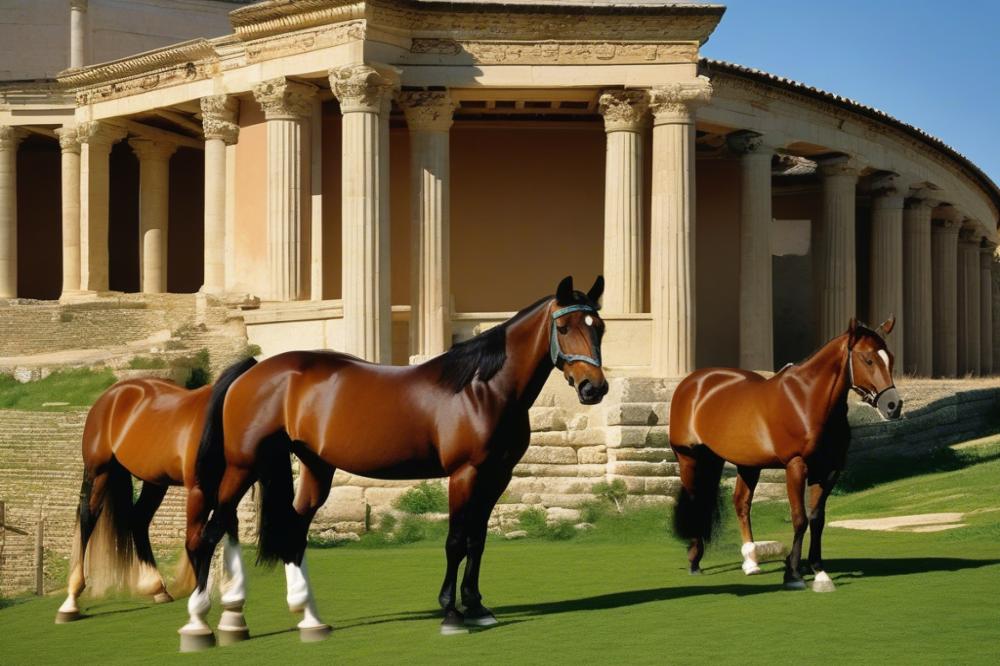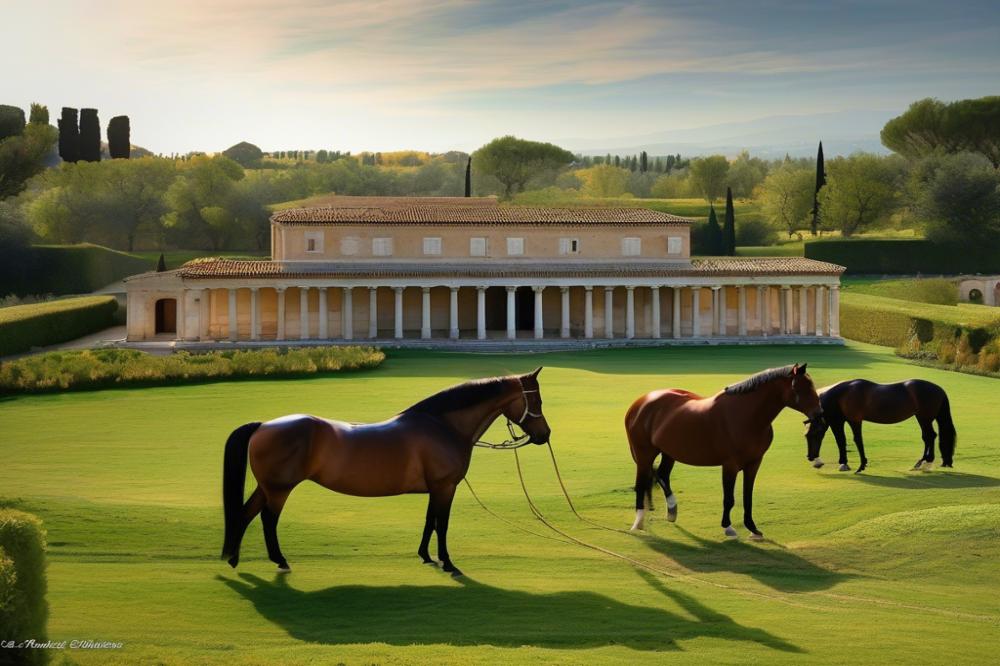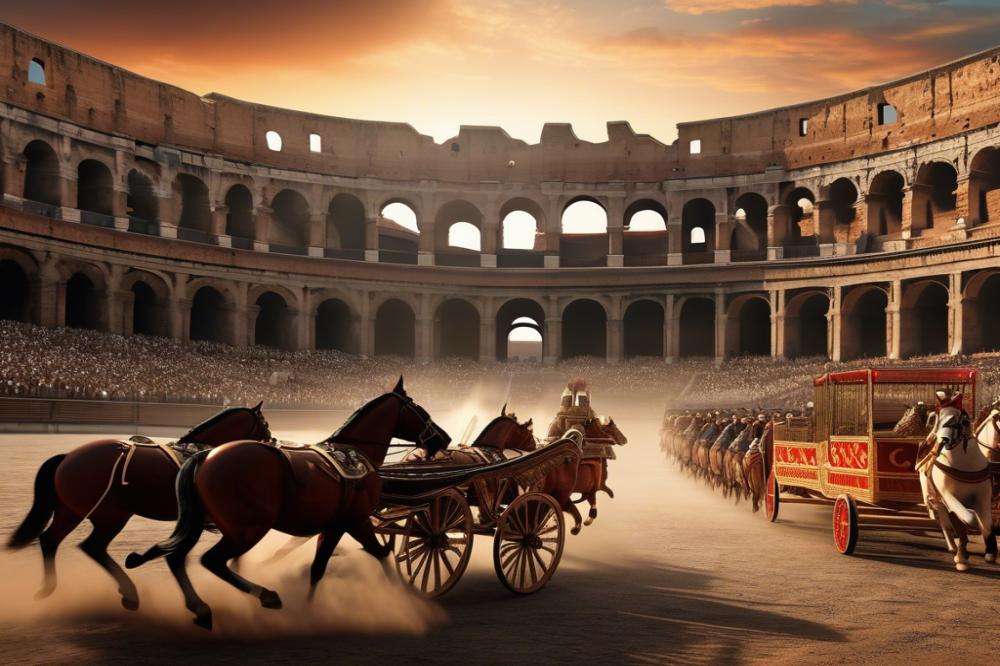The symbolism of horses in Ancient Roman Culture
The significance of horses in ancient Rome goes far beyond mere transportation. These magnificent animals played a vital role in various aspects of Roman life. For both the elite and common citizens, equines held profound meaning, serving as symbols of power, status, and even divine favor. In battles, they represented strength and courage, while in daily routines, they facilitated trade and communication across the vast empire.
Horses were not just animals; they were integral to the societal structure. The military relied heavily on them for cavalry units, which often turned the tide of conflicts. Wealthier citizens competed to own the finest specimens, showcasing their affluence and influence. Meanwhile, villagers depended on these creatures for farming and transport. Thus, every level of society was intricately connected to horses.
Understanding the symbolism of horses illuminates many layers of Roman civilization. The relationships formed between humans and these creatures can reveal much about the values and beliefs of the time. This article aims to delve into the multi-faceted roles horses played in ancient Rome. It will explore their various symbolic meanings and their influence on society. Through this exploration, we can gain insight into the broader cultural context of a civilization that has left a lasting impact on history.
The Role of Roman horses in equestrian culture

Explanation of the Equestrian Class in Ancient Rome
The equestrian class held an important place in Roman society. Members of this group were wealthy citizens, often involved in trade and business. They positioned themselves just below the senatorial class. Equestrians wore special clothing that distinguished them from others. Their status came with various privileges, including the ability to hold certain public offices. Horses were a vital part of their identity, reflecting both their social standing and their lifestyle.
Horses in Chariot Racing and Public Games
Chariot racing was one of the most popular sports in ancient Rome. Events took place in large venues like the Circus Maximus, drawing huge crowds. Horses were integral to these races, creating excitement and drama. Winning a race could bring fame to both the driver and the horses. This sport connected the people, showcasing not just the skill of the riders but also the power and beauty of the animals. Different factions added more excitement, leading to fierce rivalries among fans.
Symbol of Wealth and Social Status
Ownership of horses signified great wealth and prestige. Equestrians often kept lavish stables filled with spirited animals. The type and quality of a horse could communicate social rank instantly. A fine horse was a status symbol, not merely a means of transport. Many equestrians dedicated time to training and caring for their horses, further emphasizing their importance. Horses became an essential part of their identity in a society that valued prestige and success.
Horses and Mythology in Ancient Rome

Horses in Roman Mythology and Their Representation of Gods
Horses held significant meaning in Roman mythology. They were often seen as symbols of power and fertility. Gods like Neptune, the god of the sea, had a strong connection with these animals. His chariot, pulled by magnificent horses, represented control over the oceans. These creatures embodied strength and speed, traits admired by many Romans. Often, they were depicted alongside major deities, highlighting their important status.
The Role of Horses in Myths and Legends
Various myths featured horses as central figures. One popular tale involves the winged horse Pegasus. Although initially from Greek mythology, Romans adopted Pegasus into their own literary traditions. This creature symbolized inspiration and poetic beauty. In other stories, horses were connected to the underworld, guided by the god Pluto. They played roles that shaped the narratives, signifying freedom or tragic loss.
Cultural Narratives Surrounding Horses and Their Significance
Many tales from ancient Rome featured these animals in battles and ceremonies. They often signified victory, pride, and nobility. Emperors and generals used horses to display their status. Special breeds were highly sought after for their beauty and strength. These animals became symbols of wealth and power. Festivals and races often included them, emphasizing their importance in daily life. The bond between humans and horses deepened through these stories, adding layers to their symbolic roles.
The representation of horses in Roman culture reveals their layered meanings. They were not merely beasts of burden; they embodied ideals cherished by society. Through mythology, they became part of something greater, further enriching the Roman narrative tapestry.
Symbols of Power and Status

In ancient Roman culture, horses carried significant meaning beyond their physical presence. They symbolized military strength and displayed the might of an army. Generals rode into battle on these majestic creatures, often choosing swift and strong mounts. A horse could dictate the fate of a legion and, by extension, the entire empire. When a leader was seen on horseback, it communicated authority and the readiness to lead.
Roman leaders understood the importance of horses in showcasing their power. Their steeds were not mere transportation; they represented prestige in the hierarchical structure of society. Not only did a powerful general ride a notable horse, but this choice also reflected his capabilities and status. Victories in battles were celebrated not just for the triumph over enemies, but also for the impressive display of cavalry that accompanied the army.
The art of horse breeding held a special place among the elite. High-ranking individuals invested time and resources to raise exceptional animals, which often became a point of pride. An exquisite horse could serve as a status symbol, much like a fine piece of jewelry or an impressive estate. Ownership of beautiful and powerful horses was a stark indicator of wealth and influence.
Society viewed horses as a reflection of one’s character and achievements. Those who owned extraordinary steeds were often respected and admired. The breeding of horses required knowledge and skill, making it a pursuit for those at the top of the social ladder. Displays of equestrian talent and ownership became common in elite gatherings.
A horse’s color, size, and temperament were carefully considered in breeding. Commerce around horses flourished, with specific breeds being highly sought after. This market reflected not just the animals’ uses in warfare but their roles in everyday life and entertainment. The connection between horses and status was deeply entrenched in Roman culture.
Horses in War and Conflict

The strategic use of horses played a critical role in Roman military tactics. These animals provided mobility that infantry simply could not achieve. Cavalry units could maneuver quickly, striking at crucial moments. Horses often allowed soldiers to cover large distances, facilitating rapid deployments. This capability was vital during battles where timing could mean the difference between victory and defeat.
As the Roman Empire expanded, the impact of horses on warfare became increasingly significant. They contributed to the ability to conquer vast territories. With mounted soldiers, the Romans could outpace their enemies. This advantage helped Rome establish control over regions that would otherwise be difficult to reach. Without the horse, the ambitious expansion of the Empire might have been severely hampered.
Several famous battles featured cavalry units that showcased their importance. The Battle of Magnesia is a prime example. Roman cavalry charged the enemy, disrupting their lines and creating chaos. Another notable event was the Battle of the Teutoburg Forest, where the use of fast-moving troops influenced tactics on both sides. These instances highlight how essential horses were to Roman military success.
Agricultural and Transportation Uses of Horses
The role of horses in agriculture and daily labor
Horses played a vital part in ancient Roman agriculture. They were key helpers in fields, pulling plows and turning soil. This made farming more efficient and productive. Farmers depended on their strength. The labor they provided helped to feed large populations.
Daily labor also relied on these animals. Tasks such as hauling goods and transportation of supplies were common. Horses could carry heavy loads, saving time and effort. Workers used them to transport crops to markets, increasing trade opportunities. Their presence was felt in every aspect of the agrarian lifestyle.
Horses as a means of transportation in urban and rural settings
Transportation across both urban and rural areas greatly benefited from horses. In cities, journeys were often made quicker on horseback. Citizens utilized them for short trips and long travels alike. Public officials and messengers also relied on them for speedy communication.
Rural regions depended on horses for longer distances. They helped families travel to neighboring farms or markets. The ability to move goods and people efficiently shaped social life. Community events and trade fairs became more accessible because of these animals.
Economic importance of horses in trade and movement
Horses were more than just companions; they were economic assets. Trade in the Roman Empire flourished, partly due to their power. Merchants needed reliable transportation for their goods, and horses fulfilled that role. As a result, the economy expanded significantly.
Both urban and rural markets saw the effects of horse use. It enabled quicker movement of resources, which stimulated local economies. In many ways, these animals helped foster relationships between distant regions. This connection between communities was essential for growth and development.
Horses also had a place in military transport. They carried soldiers and supplies, maintaining the strength of the empire. The mobility offered by horses proved crucial during campaigns. This multifaceted role highlighted their significance in both civilian and military life.
Artistic Representations of Horses
Depictions of Horses in Roman Art and Sculpture
In ancient Roman culture, horses appeared frequently in artworks. Statues often showcased their elegance and power. Sculptors paid great attention to their anatomy and movement. Many horse figures were created to honor military achievements or signify status. Temples and public spaces commonly displayed these pieces, enhancing their cultural importance.
Analysis of Frescoes, Mosaics, and Coins Featuring Horses
Frescoes present a vivid glimpse into daily life. Many featured horses in various scenarios, from agricultural work to chariot racing. Mosaics also played a crucial role in depicting equestrian themes. They often adorned the floors of wealthy homes, showcasing horses in elaborate designs. Coins showed horses as symbols of prosperity and strength. These artworks connected the public to their ideals and achievements.
Cultural Reflections of Horse Significance Through Art
The prominence of horses in artistic representations highlights their significance. They were not merely animals; they represented power, status, and freedom. Romans took pride in their equestrian skills, which added value to these portrayals. Through art, the various roles horses played in society became clear. The blend of beauty and utility in these depictions captured the essence of Roman life.
Religious and Ceremonial Significance
Horses played an important role in the religious practices of ancient Rome. They were often included in various rituals and ceremonies. Priests frequently used horses in sacrifices to honor gods. The connection between horses and the divine was significant in Roman beliefs.
Many ceremonies featured horses prominently. One of the most notable was the triumph, a grand celebration for victorious generals. During a triumph, horses pulled elaborate chariots. They were decorated and paraded through the streets, creating a spectacle that showcased both military success and divine favor.
Spiritual symbolism surrounded these majestic animals. Romans believed that horses could carry prayers to the heavens. This idea added depth to their religious sentiments. Furthermore, horses were seen as powerful creatures, embodying both strength and nobility. Their presence in rituals highlighted a sense of honor associated with warfare and victory.
In daily religious life, horses were also involved in various festivals. Festivals honoring specific gods utilized horses in different forms of worship. Livestock, including horses, were offered as sacrifices to secure blessings. This connection between the animal and the divine reinforced the importance of horses in spiritual contexts.
Let’s not forget the importance of the horse in the context of battle. Legends spoke of divine horses that could never be tamed. Such stories added a mythical and sacred layer. The belief that horses could transport warriors to the afterlife was prevalent too.
The bond between humans and horses grew through these practices. As a result, horses became a symbol of both social status and divine connection. Each representation in rituals or festivals served to deepen their significance in the minds of the Romans.
Final Thoughts on the Symbolism of Horses
The symbolism of horses in ancient Roman culture is rich and varied. These majestic animals represented power, status, and freedom. From noble steeds in the military to graceful figures in art, they captured the spirit of an era. People linked horses to various aspects of daily life, showing their importance in both practical and ceremonial contexts.
Across different cultures, horses have held similar significance. Many societies admire them for their beauty, strength, and loyalty. This admiration extends beyond ancient Rome, resonating with tribes and empires worldwide. The equestrian culture represents a universal bond that connects human beings to these remarkable creatures.
Looking back, the legacy of horses in ancient Rome remains influential. Their presence in society shaped social structures, created myths, and inspired artworks. While times have changed, the fascination with horses persists. Today, they continue to symbolize freedom and companionship, echoing the rich history that defined their role in civilization.



